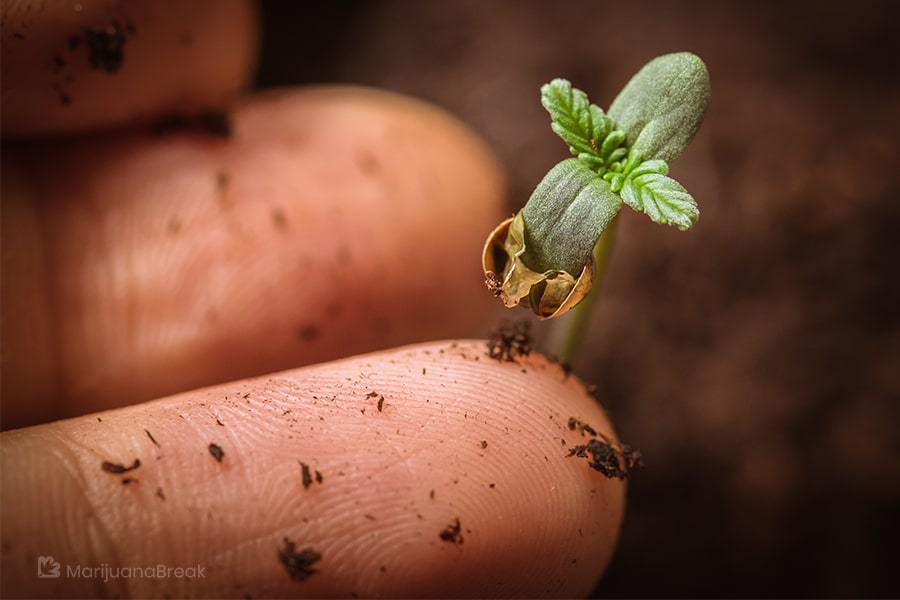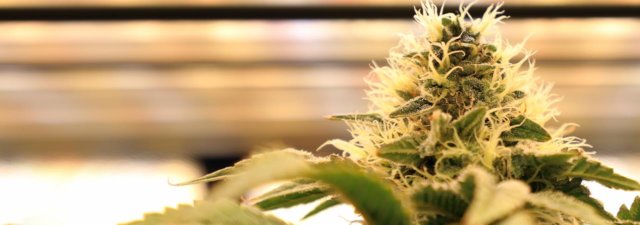Plant tissue culture is a technique that horticulturalists use to grow and maintain plant cells. This allows them to produce genetically identical clones on a massive scale. The method has been popular in agriculture for many years. However, it is only just beginning to permeate the cannabis industry.
While plant tissue culture is probably more suitable for large-scale cannabis grows, it is also possible to apply this technique to smaller operations. Here is all you need to know about tissue culture in cannabis cultivation and why you might consider it for your next grow.
What Is Plant Tissue Culture?
The technique of growing plants using tissue cultures first became popular in the 1950s and 1960s. It provided a novel way to cultivate species such as orchids that are challenging to grow from seed. By the 1990s, plant tissue culture had become widespread throughout the agricultural sector. Its primary attraction was that it allowed farmers to grow healthy crops on a larger scale than ever before.
The process involves taking a small tissue sample from a mature plant under sterile conditions. This sample, which can be just a few cells, then grows on a culture medium. This culture medium is usually an agar gel that contains a variety of nutrients, hormones, sugar, and other ingredients.
Because many plant cells possess the ability to regenerate into an entire plant, tissue culture is a highly efficient growing technique. Some people also refer to the process as ‘micropropagation.’
Plant tissue cultures have a broad range of educational and commercial applications. These include the following:
- Large scale propagation
- Production of genetically-modified plants
- Providing educational models of plant physiology
- Preserving endangered species
- Extraction and engineering of chemicals
Tissue cultures are an effective and versatile technique. Let’s examine how they apply to cannabis cultivation.
Tissue Culture in Cannabis Growing

In the past, cannabis growers had to rely on seeds. They were widely available, sometimes merely falling out of the buds of whatever strain was available. However, using these seeds presented a variety of problems.
First, seeds are genetically unstable. This instability means that one batch of seeds could produce plants with different characteristics, some of which might be more desirable than others.
Secondly, unless you purchase feminized seeds, there is a risk that 50% of your plants will be male. Male plants mean lower production of usable flower. Furthermore, unless you remove them in time, your male plants could pollinate the females, producing seeds and reducing potency.
Finally, seeds take time to germinate, which means waiting longer until your crops are ripe and ready to harvest.
In recent years, more experienced growers have begun using cuttings rather than seeds. Cuttings increase genetic stability, reduce the possibility of male plants ruining your crop, and save a lot of time.
The downside of taking cuttings is that they are vulnerable to infection unless all of your equipment is completely sterile. And, of course, you need a mature female plant from which to take them.
In principle, using plant tissue cultures to grow cannabis is similar to taking cuttings. However, there are some key differences, too.
Advantages of Tissue Culture for Growing Cannabis
There are several distinct advantages of using tissue cultures to grow cannabis rather than seeds or cuttings:
- Genetic stability allows cultivators to clone plants with desirable traits.
- Tiny tissue samples are necessary to create identical clones.
- Clones are more consistent and resistant to disease than traditional cuttings.
- Their small size allows the storage of multiple clones in minimal space.
- It is possible to store genetic material for long periods of time and is ideal for breeders.
Disadvantages of Tissue Culture for Growing Cannabis
Of course, using tissue cultures to grow cannabis also has its fair share of difficulties:
- A sterile environment is necessary.
- Growers may need to purchase specialized equipment for cloning and storage.
- Clones mature more slowly than traditional cuttings, taking around a month before they are ready to transplant. Traditional cuttings take just two weeks.
Pros and Cons of Tissue Culture in Cannabis Growing: A Summary
This chart summarizes the pros and cons of growing cannabis using tissue cultures vs. seeds and traditional cutting methods:
| Methods | Pros | Cons |
|---|---|---|
| Seeds |
|
|
| Cuttings |
|
|
| Tissue Culture |
|
|
Why Use Tissue Cultures to Grow Cannabis?
As you can see, using tissue cultures to grow cannabis is a highly efficient method. However, since it requires a sterile environment and specialist equipment, it may be more suitable for large-scale commercial grows.
That said, it is still viable for smaller-scale growers to try their hand at growing from tissue cultures. It is possible to purchase DIY plant tissue culture kits to use at home, and doing so provides a fascinating insight into the biology of cannabis if nothing else.
Furthermore, by trying this growing method, you have a unique opportunity to preserve the genetics of your precious plants. If you have a specimen that has an especially impressive terpene profile or yields larger-than-average buds, you could essentially immortalize these plants using tissue culture samples.
This is especially beneficial for anyone interested in breeding cannabis. The small size of the tissue samples makes it possible to store genetics from various strains in a limited space. Over time, you could build a diverse ‘genetic library’ from which to choose.
How to Grow Cannabis from Tissue Cultures
There are several stages to growing cannabis using plant tissue cultures. You can read about the full process in this Frontiers in Plant Science article, but we have summarized it here:
- Cut
First, select a healthy female plant with desirable genetic traits. Then take cuttings at the nodal segment, taking care to include some young axillary buds but no fully expanded leaves.
Remove the fan leaves and stipules and cut the stem at a 45-degree angle, leaving around 5 mm of stem below the bud.
- Sterilize
Sterilize using 2% sodium hypochlorite (diluted household bleach) and 0.1% Tween-20. Soak in the solution for five minutes before rinsing in sterile, distilled water three times. Rinse for one minute each time.
- Add to Nutrient Culture
Place in culture containers (round-bottom glass test tubes with plastic caps are ideal). Add 20ml of shooting media, for example, Murashige and Skoog. Supplement with vitamins, sucrose, charcoal, and agar. Add plant growth regulators.
- Transfer
Shoots should begin to emerge after 1–5 months. Then, plants must be subcultured on fresh growing media once a month.
Once the shoots reach 2.5 cm, transplant the plants to larger test tubes containing 50ml rooting media. If roots begin to emerge in the shooting media, there is no need to transfer the plants.
- Transplant
Roots should start to appear after 3–5 weeks. At this stage, remove the plants from the rooting media and carefully rinse the roots with lukewarm tap water.
Transplant into soil or hydroponic growing medium. Cover plants with humidity domes for the first week or two of growth.
Note: All cultures should be incubated at 75 ̊F (24 ̊C) under white fluorescent lighting with a 16-hour photoperiod.
Final Thoughts on Tissue Culture in Cannabis Growing
Plant tissue culture is a modern way of propagating cannabis plants. It provides a viable alternative to growing from seeds or cuttings, with several distinct advantages.
Not only do tissue cultures produce genetically stable clones, but they also allow whole plants to grow from just a few tiny cells. This unique benefit means that cultivators can keep hundreds of clones in a relatively small space. It also allows them to build up a bank of genetic material with multiple clones from different strains.
The major downside to growing from tissue cultures is that it requires sterility and specialist equipment. This means that it may be more suitable for large-scale rather than small-scale grows. However, adventurous home-growers could also try their hand at this technique and achieve a successful harvest.
So, if you are a budding horticulturist and want to try something new, why not have a go? It seems that growing cannabis from tissue culture is not only the cultivation method of the future. It is also a unique and rewarding experience that you will not easily forget.




![How to Make Those Nugs Last [And Conserve Your Weed!]](https://wayofleaf.com/wp-content/uploads/2019/02/wol_how-to-conserve-weed-640x225.jpg)


![8 Tips for Growing AK-47 Marijuana [Grower’s Guide]](https://wayofleaf.com/wp-content/uploads/2018/11/mj_tips-for-growing-ak-47-marijuana-growers-guide-640x225.jpg)

![Growing Autoflowering Cannabis Seeds [Guide]](https://wayofleaf.com/wp-content/uploads/2018/09/wol_1920x450-35-640x225.jpg)


